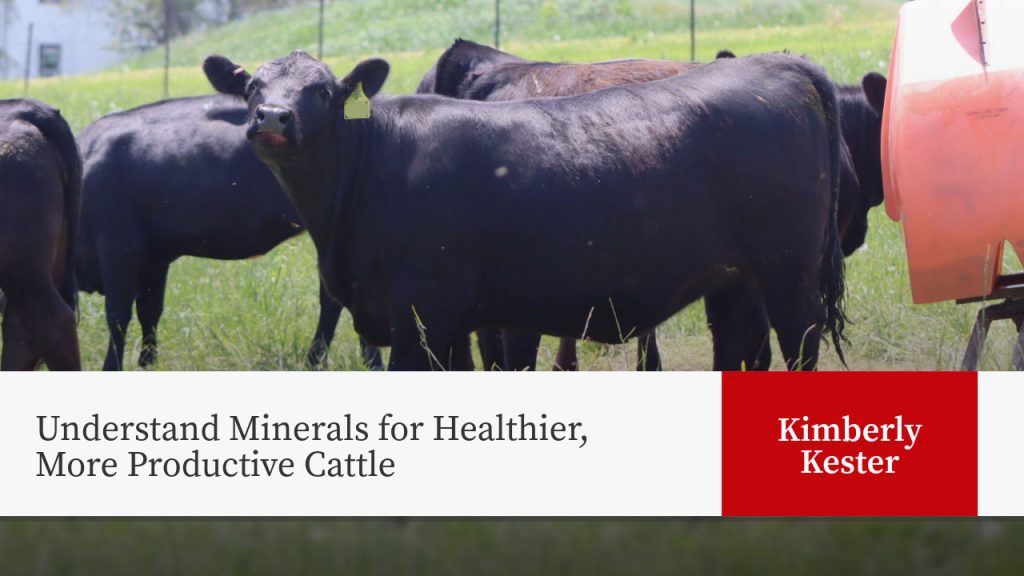
Introduction
It’s no secret that cattle require sufficient amounts of minerals as part of their diets to ensure they are productive members of the herd. Minerals are classified as macrominerals which are needed in fairly large amounts, and microminerals or “trace” minerals which are needed in small amounts. Phosphorus, calcium, magnesium, potassium, sodium, and sulfur are macrominerals required by beef cattle. Calcium and phosphorus are crucial for skeletal development and strength, weight maintenance, and milk production. Magnesium is important for metabolism and function of the nervous system. Copper, cobalt, iron, iodine, manganese, selenium, and zinc are the key microminerals for cattle. They largely contribute to immune function and reproduction.
Mineral Content in Forages
Mineral content in pasture and harvested forages is variable based on forage species and plant maturity, as well as soil type and fertility. Some examples of when forages mineral content tends to be lower is corn stalks, stockpiled forage, and low quality hay. Individual animal requirements also fluctuate depending on their current developmental stage and reproductive status. Mineral supplementation is used to meet the animal’s physiological requirements.
Mineral Delivery Methods
Mineral delivery methods differ from farm to farm and there are considerations for each method. Protein tubs and free-choice mineral mixes are most common, though feeding buffet-style minerals has some interest.
“Buffet,” “cafeteria,” or “salad bar” mineral feeding offers individual minerals to cattle in separate tubs, which allows them to select which minerals they want to consume. The thought behind this is cattle will only eat what they need. However, mineral buffets do not provide sufficient amounts of each mineral to meet requirements, due to cattle’s inability to discern whether they need a particular mineral or not. Cattle only have an appetite for salt, which is why it is often used in mineral mixes to encourage and manage consumption.
Palatability of Minerals
Palatability of individual minerals is also a challenge. Cows are smell- and taste-oriented. Magnesium, phosphorous, and iron are known for their low-palatability. If offered individually, cattle are unlikely to willingly consume them. By incorporating required minerals into protein tubs and mixes with multiple minerals, palatability can be increased and intake is more reliable. Buffet-style mineral feeding can also be costly and requires extra attention to mineral quality and bioavailability.
Mineral Premixes
Mineral premixes are ready-to-use products that allow producers to offer them free-choice, top-dress, or incorporate into total mixed rations depending on their operation. It is possible to have custom mineral mixes made by working with your nutritionist using forage and feed analysis from your farm. Custom mixes may or may not be cost effective options for every farm. For premixes and custom mixes, understanding the ingredient list and guaranteed analysis is essential to getting the most bang for your buck and providing your cattle with only what they truly need.
Summary
Regardless of how you choose to supplement minerals, monitoring and recording intake should be part of your routine. Adjust your mix or delivery method to meet the seasonal and developmental needs of your herd.
Article originally published in the Wisconsin Agriculturist in July 2025.
Author

Kimberly Kester
Dairy and Livestock Program Manager – Kimberly’s programming focuses on beef cow-calf operations, specifically genetic improvement, heifer development, and heat abatement. She also supports programming in small ruminant parasite management and poultry flock management.
References
- Arthington, J.D., & Ranches, J. (2021). Trace mineral nutrition of grazing beef cattle. Animals, 11(10), 2767. https://doi.org/10.3390/ani11102767
- Lalman, D. (2017). Vitamin and mineral nutrition of grazing cattle, E-861. Oklahoma State University Extension. https://extension.okstate.edu/fact-sheets/vitamin-and-mineral-nutrition-of-grazing-cattle.html
- Swecker, W.S., & Van Saun, R.J. (Eds.). (2023). Vitamins and trace minerals in ruminants. Veterinary Clinics of North America: Food Animal Practice, 39(3).
Reviewers
William Halfman
Beef Outreach Specialist


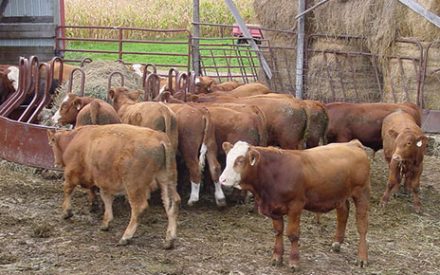 Do You Have Enough Forage? Four Steps to Figure Forage Inventory
Do You Have Enough Forage? Four Steps to Figure Forage Inventory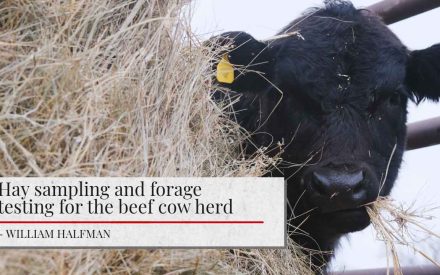 Hay sampling and forage testing for the beef cow herd
Hay sampling and forage testing for the beef cow herd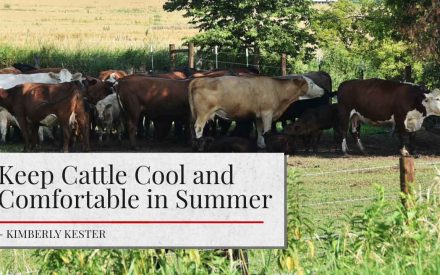 Keep Cattle Cool and Comfortable in Summer
Keep Cattle Cool and Comfortable in Summer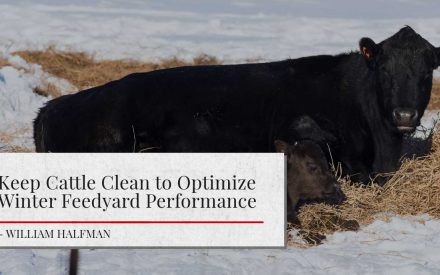 Keep Cattle Clean to Optimize Winter Feedyard Performance
Keep Cattle Clean to Optimize Winter Feedyard Performance


